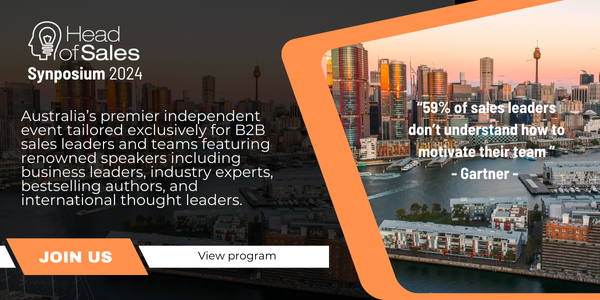The success of your elevator speech depends on your ability to craft a message that offers a strong promise of benefits to your target market. A really good one immediately differentiates you from your competitors.
Customer-attracting elevator speeches must convey TWO main ideas. They must specifically define your target customer. AND, they must help prospective customers understand the value they can receive from your product or service.
Follow these guidelines to create your personal elevator speech.
Talk Results, Not Products or Process
Customers don’t care what you do. They don’t care how you do it. But they do care deeply about their business. They’ll be extremely interested if you can do things such as:
● Solve a pressing problem.
● Improve operational efficiency.
● Eliminate bottlenecks.
● Increase sales or cut costs.
● Enhance customer loyalty.
● Open new markets.
This is the most important thing to remember as you develop your own elevator speech. Focus on what the customer gets – the outcomes – not on what you do.
Make Sure It’s Conversational
An elevator speech is not an ad or a slogan or a tagline, so avoid words you wouldn’t normally use if you were talking to people. You don’t need to sound “catchy.” Remember, when you’re talking to people you use lots of contractions. You don’t say “are not”, you say “aren’t” in everyday conversation.
Choose the simplest words possible for your elevator speech. “Use” is better than “utilise.” “Get” is better than “obtain.” “Turn” is better than “transform.” These are the words you use (not utilise) when you’re talking to someone. Also, I recommend using 8th grade language to ensure your elevator speech is understandable to all. Don’t use acronyms, impressive-sounding words or complex descriptions unless your target market is people who know the meaning of everything you say.
Strive for Repeatability
If your elevator speech is easy for you to say over and over again, then you have it right. Plus, those who hear it can easily repeat it when you’re not around – spreading your message to others who may benefit from what you offer.
Developing Your Elevator Speech
Crafting your elevator speech is a challenging exercise. It may take you months to achieve the clarity and simplicity that you want in this marketing message. The key to coming up with a great one is this – create the best elevator speech you can right away, practice it, and then use it. When you see how people respond, refine it over and over again till you are confident that it’s clear and that it will attract just the right customers to you.
Every word you use in your elevator speech is critical. Your prospective customer either understands what you do or he doesn’t. She’ll be interested in learning more about your offering or she won’t. That’s why finding the right words is so important.

Getting Started
This is probably the hardest part for many people. If you’re an entrepreneur, independent professional or small business owner, what you do is closely attached to who you are as a person.
Lots of soul-searching may be needed to clarify the true value you bring to your customers.
If you work as a salesperson for an established firm, your management may have already told you what your “elevator pitch” is and they expect you to follow the company line.
However, most companies have messages full of words that either convey no value to customers or are discarded as self-promoting puffery. No one in today’s market puts any credence in words like “best” or “state-of-the-art.” Your challenge is to find the real value in your offering.
How can you find out what customers think your biggest value is? There’s only one way. You have to ask. I strongly recommend interviewing:
● People who you’ve worked with before.
● Users of your products, services or solutions.
● Other consultants and independent professionals who know your strengths.
Explore with them the value you, your products or your services bring to their business. Ask questions such as:
● From your perspective, what difference did my product/service make for your business?
● In what ways could you quantify the value of my solution?
● What were the primary problems, difficulties, bottlenecks or challenges that my offering solved for you?
● Can you explain to me the business implications and ramifications of these problems?
Whatever answers you get, explore them in greater depth. Aren’t you curious about the impact of your products and services? I always am. It’s always interesting and incredibly valuable to get a perspective that’s different from your own
Step 1: Specify your target market.
Be clear and explicit in your target market definition.
For example:
● Government
● Human resource departments
● Manufacturing plants
Step 2: Write down the problems/challenges faced by your target market and solvable by your product or service.
These are common problems and challenges faced by many organisations today.
For example:
● Inefficient processes
● Employee turnover
● Customer turnover
● Declining profitability
● Increased competition
● Lack of innovation
● Bottlenecks in workflow
Step 3: Describe how your target market “feels” about these problems or challenges.
A compelling elevator speech has an emotional component. It appeals to the heart of the prospective buyer. Here are some highly effective words you might want to use in your elevator speech.
For example:
● Struggling
● Concerned
● Frustrated
● Having trouble
● Constrained
● Difficulties

Step 4: State the results or outcomes your customers get from using your product or service.
Remember, people don’t care about your product, what you can do or how you do it. They’re only concerned about what’s in it for them. How can you help your customers improve their business? That’s what’s important. Know what they want to achieve! Use them to trigger ideas for your own elevator speech.
For example:
● Increase cash flow
● Increase customers
● Acquire profitable customers
● Decrease turnover
● Stimulate new business opportunities
● Improve customer loyalty
Notice how each of these results starts with a word that shows movement. As an outcome of working with you, bad or costly things are reduced, eliminated or minimized. Conversely, outcomes people want are improved, enhanced or ensured. That’s what’s in it for your customer.
That’s what they want to hear. And, the more specific you can be the better. How much can you reduce turnover? What percentage of improvement did your customers receive? Telling people a range is fine – no one expects their company to achieve exactly the same outcomes as other businesses.
Step 5: Refine your lists.
Your next step is to review all the problems and challenges you identified in Step 3. As you look over all the ideas you wrote down, try to determine which are the most appropriate and relevant to what you can do for your customers. Pick out 2 or 3 to start with.
Next, look at your list of words that describe how your targeted customers feel about these problems and issues. Which two words are most descriptive of how your ideal prospect feels?
Finally, review your benefits. From your customer’s perspective, which are most important and compelling? Again, pick out 2-3 that you can try out in your first elevator speech.
The Problem-Centered Elevator Speech
Research into sales success shows that customers respond much more to problem-centered approaches than to benefit-oriented ones. Why? Problems usually have top-of-mind awareness.
No one likes to deal with aggravations, frustrations, major issues and bottlenecks. These things can cause massive headaches and people want to get rid of their headaches as quickly as they can.
Here’s the formula to use for creating a problem-centered elevator speech:
I/we work with (insert target market)
… who are (insert feeling word)
… with (insert problem/issue you solve).
Example
Before: I’m a sales development specialist.
After: I work with small-to-medium sized manufacturing companies who are struggling with unpredictable revenue streams and profitable growth.
As you can see, the “After” versions clearly identify the target market, the feelings prospective customers are likely to experience, and the problems or issues that have caused them to feel this way.
The Benefit-Centered Elevator Speech
These elevator speeches are focused on what customers want to achieve. Sometimes it’s their personal dreams. Or, it could be specific business goals. But it’s out there in the future and your customers haven’t arrived at their destination yet. There’s a gap between their current reality and their desired future state.
Here’s the formula to use for creating benefit-centered elevator speeches:
I/we work with /help (target market)
… who want to (describe what your customers want).
Example
Before: I’m a mortgage broker.
After: I help first-time home buyers get financing for the home of their dreams.
As you can see from these sample elevator speeches, the focus is on the future – a highly desirable
Final Thoughts
Being able to describe your product or service offering in a manner that everyone understands is one of the most important marketing skills you need to master. It takes time and effort to work through the many iterations that you’ll try before you arrive at one that works like a charm. But the challenge is worth it. Enticing is good!
Just think how you’ll feel the next time someone asks, “What do you do?” Your heart won’t beat rapidly in your chest as you stumble and bumble through your clumsy, poorly worded, nonappealing elevator pitch.
Instead you’ll look at your prospective customer with a winning smile on your face and very confidently say, “I help small businesses win big contracts in the corporate market.”
If you missed part 1 – here it is:




























